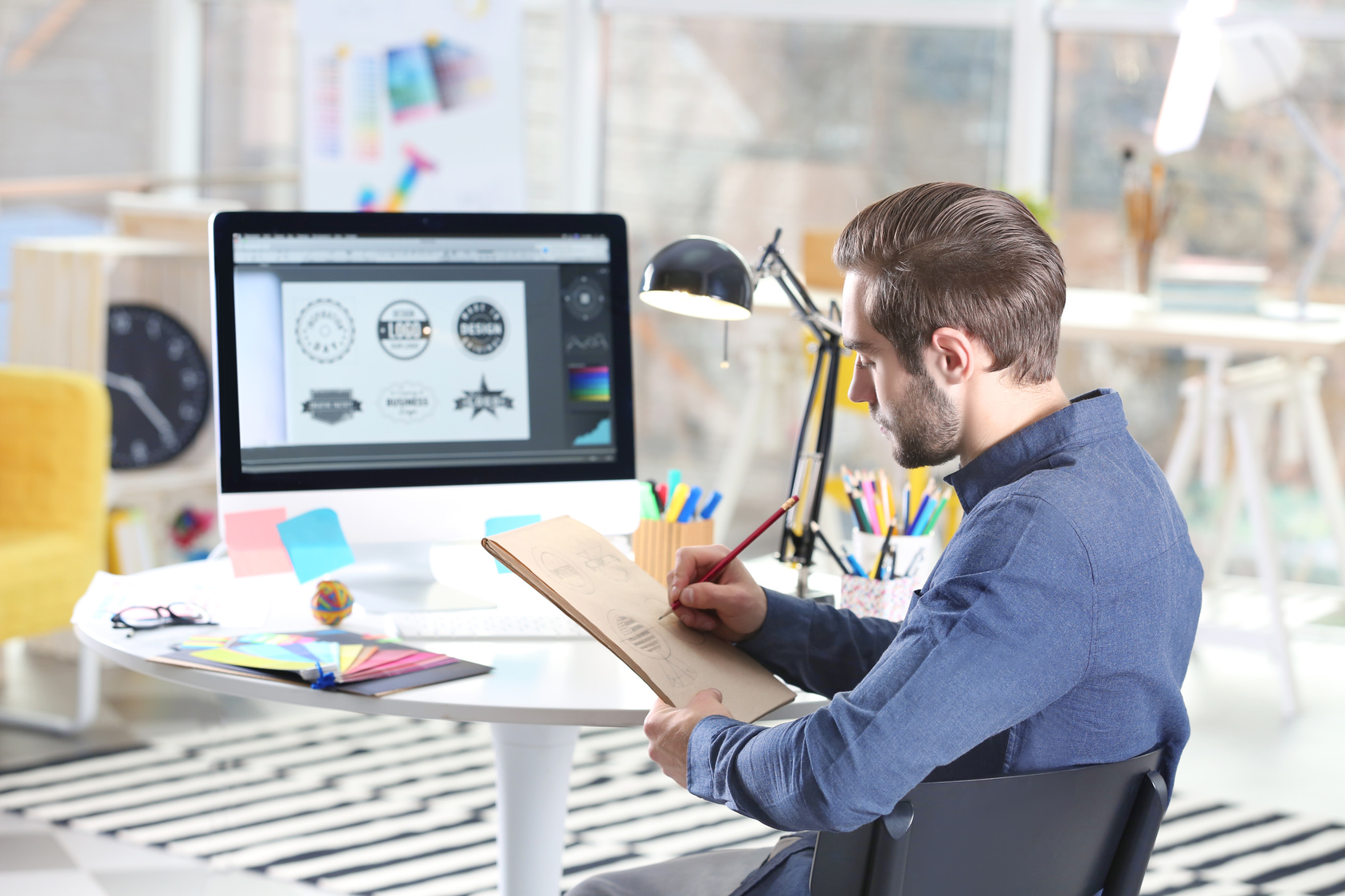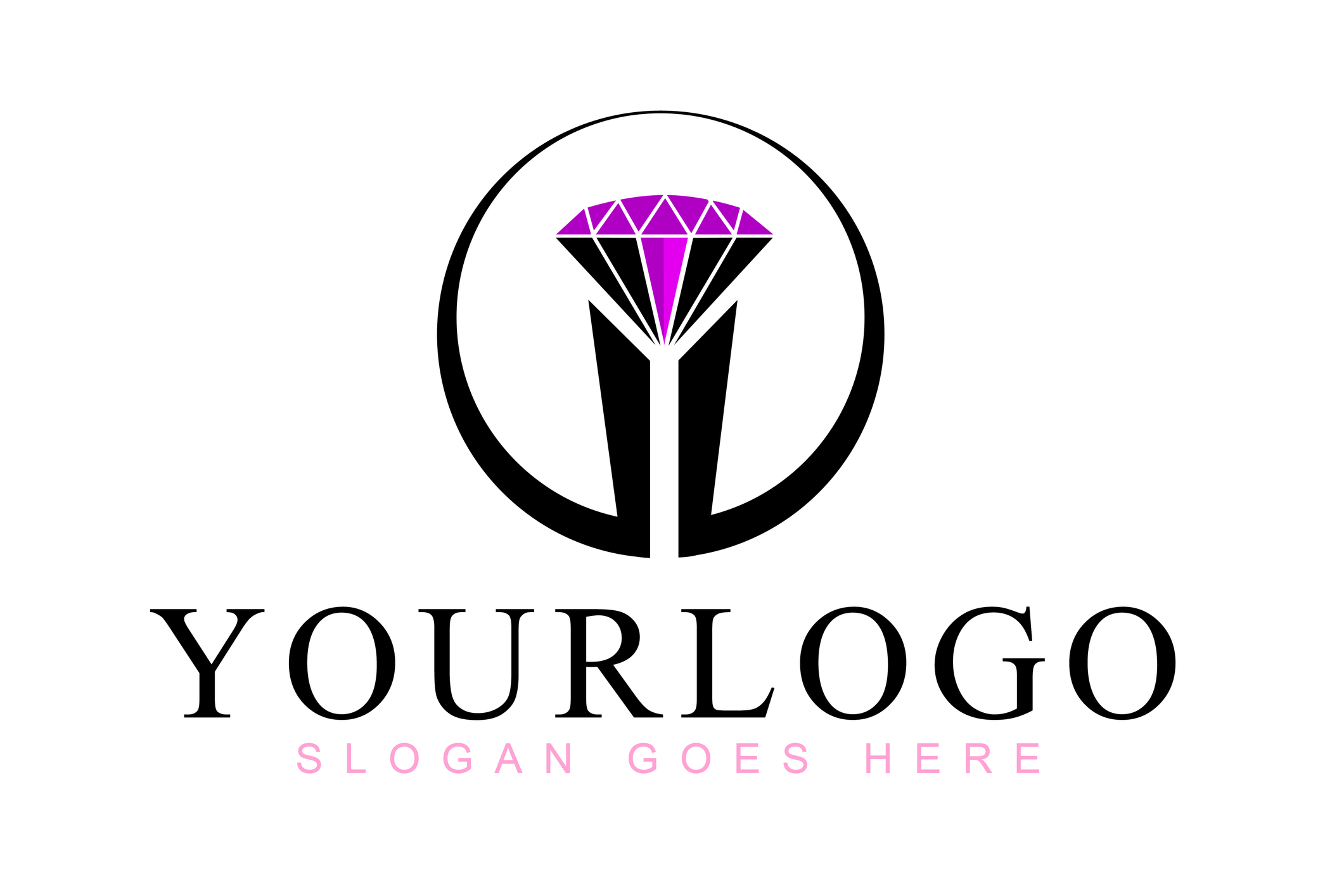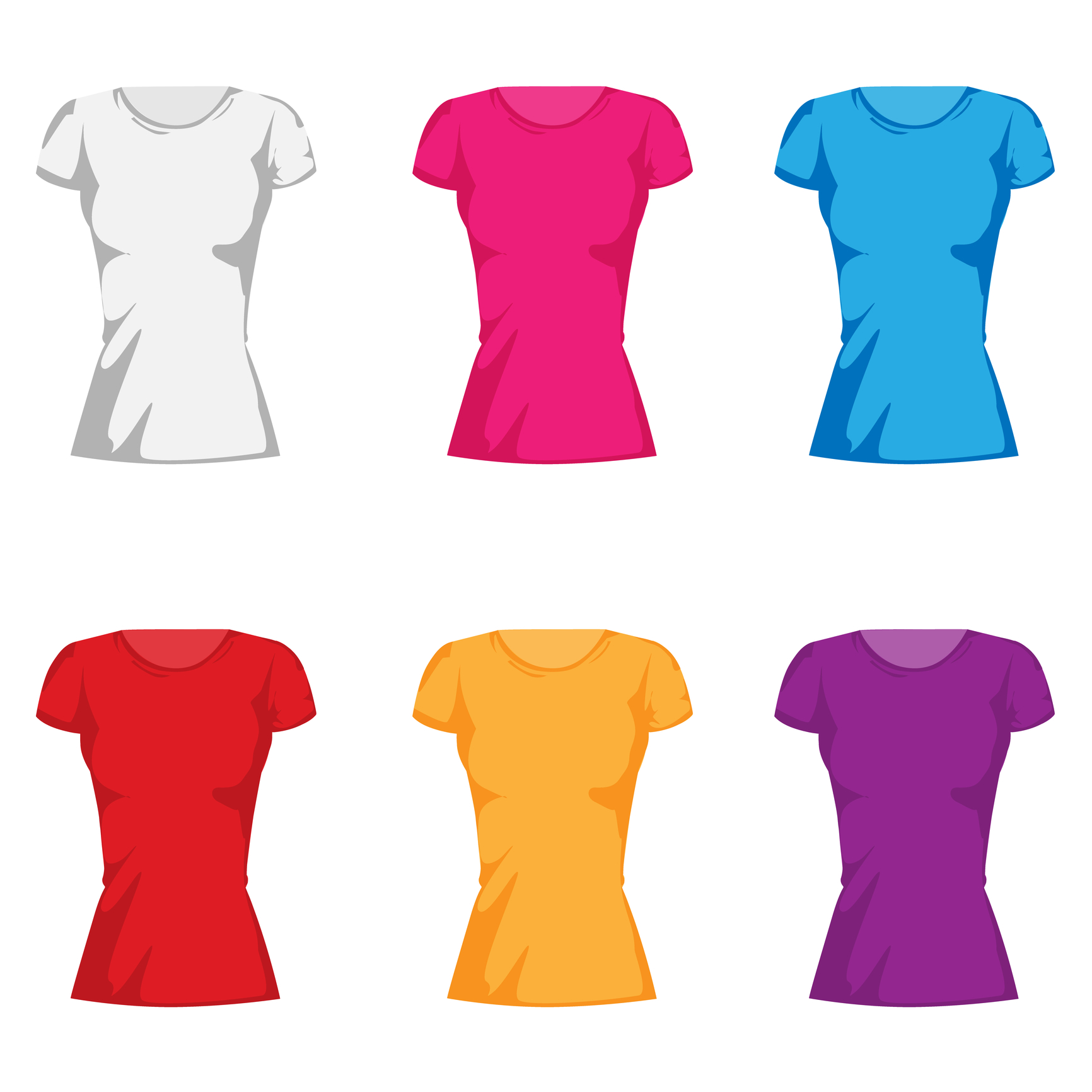What Makes a Watch Logo Stand the Test of Time
Posted on July 25, 2017 by Logo Design Tips and Tricks

Fine watches are synonymous with precision, engineering, and design. In fact, the watch logo of a fine watch can indicate its quality as well as its worth.
Like any other brand, a watch logo can immediately conjure ideas of wealth, quality, and elegance. Businesses work over time to solidify their brand by creating a track record of customer satisfaction and working to embed ideas of quality in their logo.
Linking brand quality to logo design is one way businesses associate the finest watches with a sound investment. In fact, watch companies like Rolex are recognized for holding their value over time.
What makes a watch logo stand the test of time? Let’s look at the design elements that rule the watch world:
1. Reflect the Brand With Your Watch Logo
One of the reasons it’s so important to brainstorm ideas when designing a logo is that a logo can be a lasting first impression for your business. In the case of Rolex, now recognized as the leader in watches, what could be more representative than a crown?
But using a crown alone isn’t enough to make a logo capable of standing the test of time. The design is elegant and stylish– a mirror reflection of the qualities inherent in many Rolex watches.
For a logo to persevere it has to represent the brand. For instance, one reason vintage Rolex watches for sale are so sought after is because the logo is linked to industry leadership and the crowning achievement of watches.
Since Rolex takes a year to craft a watch, has scientists working on designs, and conducts individual testing of each dive watch, it’s fitting they are forever recognized as royalty.
2. Associate Your Brand With Core Values
We all know there isn’t a little king living inside your watch moving the hands. But linking Rolex to royalty has been a successful strategy over time.
Other watch makers use this same association technique. In addition, they take into account what consumers most connect with demanding conditions.
What could be more important to a diver or a pilot than their watch? Breitling employs both wings and an anchor in their logo.
In addition, the watch is both elegant and secure– represented by ornate wings and a solid anchor. Who wouldn’t want the same watch that everyday heroes depend on?
The strategy is so successful that Breitling moved beyond the air and sea. Their watches were also worn by astronauts.
3. Make the Most of Your Logo
One thing is clear– the best watch makers work hard to create logos that will represent their brand over time. This is especially important with watches that offer such a small space in many times to show off their logo design.
But who can deny that a fine watch logo is recognizable right away? Our eyes flash to someone’s wrist and recognize the quality right away.
You don’t need heaps of space to make the most of your logo. You just need the best design to represent your brand.
Every business is unique. Watches are no different. Although watch makers clearly are leaders in creating lasting logos that stand the test of time.
You can too. Check out our 5 logo design trends to promote your business.
The Science Behind Fashion Logo Design Colors
Posted on July 05, 2017 by Logo Design Tips and Tricks

Logos are an important component of any company’s marketing strategy.
A clear, recognizable logo helps to establish a company’s brand. Customers will begin to associate your company with that logo, which will help encourage repeat business. This builds your company’s visual identity.
That said, not all logos are created equal.
You want your fashion logo design to resonate with customers. To do this, it must incorporate certain design principles that will make it visually appealing and compelling.
Studies show that using the right color combinations in a logo can increase brand recognition by up to 80%.
While color choices might seem like a matter of preference, there is actually a science behind it. Paying attention to color theory will help you create a more effective fashion logo design.
Let’s take a look at how to science of colors can impact a logo.
Color Influences Emotion
Have you ever seen a particular color, and it raises a variety of emotions?
It’s not just your mind playing tricks on you. There is ample evidence that colors actually have the ability to influence emotion.
Colors are generally divided into warm and cool colors. Warm colors are your reds, yellows, and oranges, while cool colors are your blues, greens, and purples.
Warm colors tend to arouse active emotions. This can include emotions like anger or anxiety, as well as excitement and creativity.
By contrast, cool colors lead to passive emotions. Cool colors can make people feel calm, or comfort, but can also lead to melancholy.
When choosing the colors for your logo, think about what kinds of emotions you want customers to experience.
For instance, if you want your brand to be associated with fun and high energy, then you might want a fashion logo design that includes red or yellow. If you would rather communicate consistency or dependability, colors like blue and brown might work better.
Memory Affects How We Perceive Color
Another way colors affect people is by bringing up associations with that color. Memory can certainly have an impact on the way we perceive colors.
Sometimes this can be deeply personal.
Perhaps it’s the color of your favorite crayon from kindergarten. Or, maybe it was the color of your prom dress.
In other cases, a universal memory and or association is brought up. For instance, most people associate the color green with nature or the color blue with water.
If you want your customers to associate certain environmental or cultural features with your company, color choice can influence that.
Shades and Hues
When it comes to fashion logo design, the color itself is not the only factor to consider.
Colors come in different shades and levels of brightness. Whether a particular color is dark, dull, light, or bright can impact how customers perceive it.
For instance, dark colors tend to indicate a more serious, or somber tone. Bright colors are more lighthearted and playful.
The shades of colors you use can influence what customers believe your business is about.
Take pastel colors, for instance. These colors are typically associated with babies. Using them in your logo could lead customers to assume that your brand is for children.
Dark colors, on the other hand, may lead customers to believe that your brand is geared towards professionals.
Whatever shades of colors you choose to use, keep these associations in mind. You always want your color choices to complement your brand identity, rather than confuse it.
Making Colors Work Together
While many logos are monochromatic, other logos use two or more colors.
Using multiple colors in your logo can help your company draw on different aspects of different colors.
For example, you can use colors that are similar to each other, like blue and purple, to emphasize the use of a cool color palette. This will reinforce the associations with cool colors.
Or, you might choose to use contrasting colors. Using blue and yellow in the same logo can tell a more complex story about what your brand is.
How Color Affects Fashion Logo Design
While there are many scientific facts about the impact of color in general, there is also specific research on how color is perceived in fashion.
Obviously, color is extremely relevant in the fashion industry. The color of a certain piece of clothing has a great impact on how a customer will react to it.
Additionally, the color of your fashion logo design will influence how customers perceive your brand overall.
For instance, blue in the fashion industry is associated with competence and confidence. Think of the blue shirts and navy blazers that businessmen often wear. Blue is considered a classic and reliable color.
Meanwhile, colors like green are considered more rugged or outdoorsy. Purple brings with it an air of sophistication or even royalty.
You should choose the colors for your fashion logo design based on what you want customers to think of your company.
If you are marketing mostly to customers who need professional clothing, blue should appear in your logo. Or, if you want to show that your clothing is high-end, purple might be a better choice.
Building Your Brand
At the end of the day, there are no right and wrong answers when it comes to choosing the colors for your logo. Rather, the colors you use should be based on the preferences of your customers, and the goals of your brand.
Remember, the purpose of your logo is to create a brand identity. You want customers to look at your logo, and immediately make associations that help them understand what your business is about.
You also want something that will stick in your customer’s mind. This way, when they see your logo in an advertisement, or on a product label, they will immediately call your business to mind.
If you’re ready to start working on a fashion logo design, then check out our free logo creating tool. You can incorporate the principles you’ve learned in this post into making an awesome logo for your business.
The Role of Color Psychology in Jewelry Logo Design
Posted on July 05, 2017 by Logo Design Tips and Tricks

You know all about the latest color trends when it comes to jewellery design. You have pieces in rose gold and have adorned your necklaces with show-stopping pendants in every shade of the rainbow.
But what role does the psychology of color play in your jewellery logo design or re-design?
Read on to find out.
The Fire Shades: Red, Orange, And Yellow
When you’re picking shades for the pieces you display in your online jewellery company, you likely think about what would look good on a variety of skin tones, is representative of your brand, and is up-to-date with current trends.
The same should be said of your logo colors.
First, we’ll examine the psychological impact of fire shades.
Yellow
Yellow is associated with optimism.
If you design pieces primarily sold for special occasions — graduations, engagements, or birthdays — be sure to include lots of yellow in your logo. It will make shoppers excited about the road ahead, while instilling a sense of joy in them.
Red
Red is a color you need to be careful with.
While it’s great for making customers stop and pay attention, it’s also been proven to cause stress and raise blood pressure levels. People also associate it with sales — meaning that if your products are higher-end and expensive, you’re setting shoppers up for disappointment.
To temper the psychological side effects, use red in your logo design when associated with a natural image, like a rose.
Orange
Orange reminds customers to think outside of the box.
Psychologically, we associate the color orange with excitement, risk-taking, and confidence. If your line is more avant-garde, play into it by using orange in your design.
The Soothing, Regal Shades: Blue, Green, and Purple
Now, let’s take a look at shades that carry more symbolism psychologically than the fire shades. Blues, greens, and purples make us think of certain experiences and can alter our perceptions of ourselves and others.
Blue
Blue calms down and relaxes anyone who sees it — after all, why do you think so many of us feel calm by the seashore?
If your brand wants to convey a sense of dependability and stability, be sure to include this hue in your logo.
Green
Psychologically, we associate green with nature. Are you a natural, hand-made artisan jeweler? Do you take inspiration from images of the woods or other natural elements?
If so, be sure to include this shade in your logo.
Purple
Purple has long been associated with royalty and expense, meaning it’s a perfect color choice for the logo of a high-end brand.
It also has psychological associations with fantasy, making it a great choice for jewelers selling costume jewellery or with designs rooted in the inspiration of a by-gone era.
Create Your Jewellery Logo Design Today
Birthstones aren’t the only way to get symbolic when it comes to the colors you use in your jewellery line.
As you’ve learned from this quick post, the colors you choose to include in your jewellery logo design can evoke certain feelings in your target market. But just like when you’re stringing beads, sometimes it can take a few tries to get the perfect combination.
Use our free online logo maker tool to test out a variety of jewellery logo design options. Make sure your logo looks as lovely as your pieces themselves!
5 Creative Placements for a Clothing Line Logo
Posted on June 27, 2017 by Logo Design Tips and Tricks

At the end of the day, a t-shirt ultimately serves two distinct yet important purposes.
First and foremost, they’re comfortable and easy to wear. There’s something about a good t-shirt that feels comforting yet stylish. But there’s a secondary, more important purpose. A t-shirt is essentially a form of branding that your audience pays for.
Accordingly, you’ll want to make sure your logo stands out. Read on for some creative placement ideas for your clothing line logo.
5 Creative Placements for a Clothing Line Logo
1. On the Hem
If you’re using a solid color, placing a colorful logo on the hem of your shirt is a great way to play with contrast.
It’ll immediately make your logo pop and stand out to anyone who sees it. More than that, it’s a subtle way to draw the human eye towards your logo.
Take a white tee, for instance. By contrasting the color (even if it’s just black) of your logo with the solid white of the shirt, you’ve managed to create an easy way to get noticed.
2. On the Sleeves
This is a popular choice that a lot of clothing companies are utilizing. You’ll have a few different options if you choose to put your clothing brand logo on the sleeve.
You can have an understated, small logo on the hem, for instance.
Or you can have your logo run across the bicep in slightly larger print. This can be a great idea for athletic wear, like what Monsta Clothing Co. has on some of their shorts.
If you’re offering long-sleeve tees, use a design with your logo running down the length of the sleeve.
Using different fonts can make a difference, too. For instance, have your logo on the breast pocket, then in a different font on the sleeves.
3. Patterned
Of course, there’s a chance that subdued isn’t quite your style. There’s nothing wrong with that. In fact, sometimes the most memorable logos are the ones that are in your face.
If that’s the case with your brand, a patterned design all across the t-shirt (yes, front and back) is a great option. The human eye loves patterns, so this is a surefire way to draw some attention.
4. On the Back
Sometimes it’s hard to beat a classic. Featuring your clothing line logo on the back of a shirt, either vertically or horizontally, is always a smart call.
It’s simple, sure, but the classics work for a reason.
5. Wrapped Around
This is a fun design that few companies take advantage of. By wrapping your text around the front and back of your t-shirt, you’re going to stand out in the best way possible.
Remember the checkerboard pattern? Wrapping your logo works in much the same way. The human eye wants to complete patterns, so eyes will be drawn to your logo.
You can either wrap it around the breast or place your logo diagonally like a sash.
Your Logo is a Statement
Your logo represents your brand as a whole. It needs to be every bit as creative and innovative as you are.
Get creative with your clothing line logo placement and stand out from the rest of the crowd.








